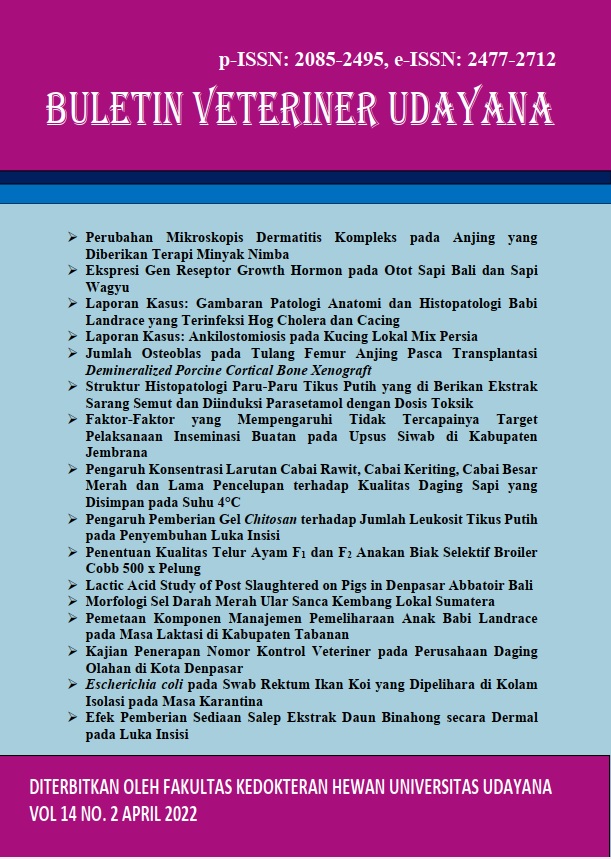THE FACTORS THAT INFLUENCE THE FAILURE TO ACHIEVE THE TARGET OF ARTIFICIAL INSEMINATION AT UPSUS SIWAB IN JEMBRANA REGENCY
Abstract
Bali cattle are a type of beef cattle that are widely developed in Indonesia because of their superiority. UPSUS SIWAB is an effort to accelerate the increase of livestock populations by intensifying the breeding of female cattle by utilizing artificial insemination technology. Based on the artificial insemination’s rate of success, Jembrana Regency has 31.87% the success rate of artificial insemination which is not optimal. This study aimed to determine the factors that influence the failure to achieve the target of artificial insemination at UPSUS SIWAB in Jembrana Regency. The method that used to collecting data in this study is by using a questionnaire and analyzed by analysis of factors. The results of this study are used the breeding variables, always called the officiers, and knowing the benefit of artificial insemination is main factors that influence the failure to achieve the target of artificial insemination in Jembrana Regency. Counseling need to be made about the benefit of artificial insemination so that more breeders can accept the existence of this technology and they can achieve the target of implementing artificial insemination in Jembrana Regency specially.
Downloads
References
Dinas Peternakan dan Kesehatan Hewan Bali. 2017. Laporan Pelaksanaan Pelayanan IB UPSUS SIWAB 2017. UPT Balai Inseminasi Buatan Daerah Provinsi Bali.
Djanah D. 1985. Mengenal Inseminasi Buatan. CV. Simplex, Jakarta.
Husein U. 2001. Metodologi Penelitian dan Aplikasi dalam Pemasaran. Jakarta: PT. Gramedia Pustaka Utama
Kubkomawa HI. 2018. The use of artificial insemination (ai) technology in improving milk, beef and reproductive efficiency in tropical africa: a review. Dairy Vet. Sci. J. 5(2): 555-660.
Patel GK, Haque N, Madhavatar M, Chaudhari AK, Patel DK, Bhalakiya N, Jamnesha N, Patel P, Kumar R. 2017. Artificial insemination: A tool to improve livestock productivity. J. Pharmacog. Phytochem. SP1: 307-313.
Sudita IDN, Tonga Y, Kaca N. 2012. Kajian pelestarian plasma nuftah sapi bali di Bali. J. Lingkungan Wicaksana. 21(2): 25-33.
Sharma S. 1996. Applied Mutivariate Techniques. Jhon Wiley & Son.Inc. New York.





